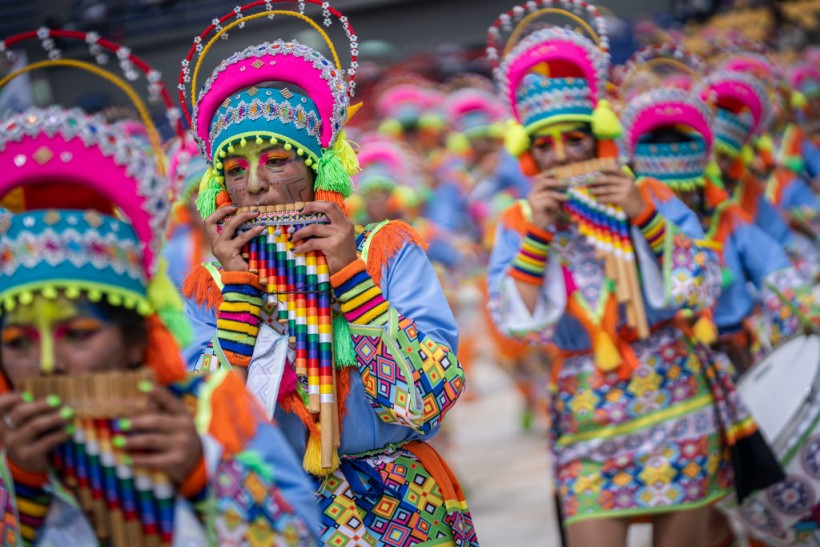Colombia: Top Local Music That Reflects the South American Country's Culture and Tradition

A vacation to Colombia would be incomplete without experiencing some of the country's celebrated music.
Music in Colombia reflects the country's great culture and ancestral diversity, with much of it incorporating Spanish and European influences and indigenous sounds and African beats.
Often dubbed the "Land of a Thousand Rhythms," Colombia is home to a dynamic and ever-evolving musical environment. Nonetheless, three dances stand out for their current popularity and resonance: Cumbia, Vallenato, and the world-famous Salsa despite its Cuban origins.
Famous Local Music and Dances in Colombia
Cumbia, Colombian Folk
Cumbia is one of the most popular dances in the country's Caribbean region along the northern coast, and it is possibly the most internationally recognized style of Colombian music. This genre combines indigenous melodies with African rhythms and dates back to when Colombia was a Spanish colony.
The dance represents a man courting a woman; dancers travel in circles around a central point occupied by the musicians, a trait indicative of the influence of indigenous and African cultures who dance around a bonfire. Men have more mobility, allowing them to show off in front of the women they are courting.
Every year in August, the small Caribbean community of El Banco, located in the southernmost part of the Magdalena Department, hosts a National Cumbia Festival for four days, treating locals and travelers to dance competitions, concerts from emerging musicians, and parades.
Vallenato, the Rhythm of the People
Vallenato music, like Cumbia, originated on the Caribbean coast, notably in the city of Valledupar. While Cumbia has remained an iconic traditional dance, Vallenato has grown domestically and internationally.
The music comes from what estate workers used to sing while guiding livestock on dairy farms. Its lyrics, usually romantic, are based on folk legends that have been turned into songs.
A true Vallenato only requires two percussion instruments and a melody-playing accordion. Today's internationally recognized Vallenato singers, such as Juan Fernando Fonseca and Carlos Vives, use bass and drums in their songs, bringing traditional Vallenato closer to pop-rock rhythms, known as Vallenato-pop.
Although this commercial version's contribution to the international popularity of the genre, traditional Vallenato is still immensely popular domestically.
Every year in the last week of April, the most famous Vallenato festival takes place in Valledupar, the city where it all began.
It's very easy to dance to Vallenato. You just have to feel the beat and the lyrics, which are typically very poetic and inspiring. Vallenato's dance is also very fast, so be prepared to feel rushed when doing it.
Salsa in Colombia
While Cuba is the birthplace of Salsa, this style was key in developing music scenes in locations such as Puerto Rico, Mexico, Venezuela, Colombia, and even New York. Colombia has been responsible for preserving this genre over the past 50 years.
Salsa, a hybrid of Cuban, Caribbean, and African influences and a descendant of Afro-Cuban jazz, originally became popular in Colombia in the late 1960s.
The term salsa, which refers to a sauce or dressing for food in Spanish, is associated with taste and joy. Cuban musician Cheo Marquetti introduced this term after returning from Mexico, where he had experienced the diversity of hot sauces used in Mexican cuisine.
Colombia has produced several talented salsa musicians and dancers that it has exported to the world salsa scene, including bands such as Fruko y sus Tesos, Grupo Niche, and Los Titanes.
Although Cali is frequently referred to as the capital of Salsa, the importance of Caribbean cities, particularly Cartagena and Barranquilla, in creating this musical form cannot be overstated.
Besides being part of the Colombian popular culture, Salsa is now enjoyed and danced in the country's most famous nightclubs.
There are also several well-known local salsa festivals, the most popular being the World Salsa Festival, taking place in Cali every August.
Colombia's Exceptional Musical Mix
Colombian culture includes a diverse range of dances and musical styles that have remained vital to the country's culture to this day.
The Andean nation has a diverse repertoire of music styles, rhythms, and dances, each with its own peculiarities. These dances come from diverse backgrounds, as the country has been influenced by centuries of migration and colonization.
Colombia's excellent musical mix reflects this exotic blend. With over 30 traditional dances and rhythms, Colombia is a major music exporter to Latin America and the rest of the world.
This article is owned by Latin Post.
Written by: Jess Smith
WATCH: Introduction to Colombian Music - From El Viajero - Musical World Tour
Subscribe to Latin Post!
Sign up for our free newsletter for the Latest coverage!













